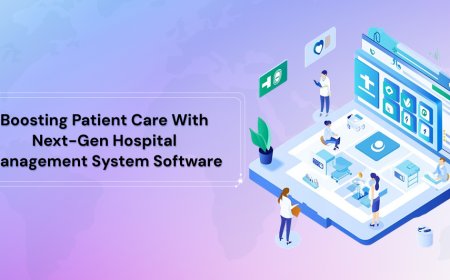Understanding Neuropathic Pain and Treatment for Long-Term Relief
Discover neuropathic pain and treatment options for long-term relief. Learn about causes, symptoms, and effective therapies to manage chronic nerve pain and improve your quality of life.

Living with neuropathic pain can feel like an endless battle against invisible flames that burn through your nerves day and night. This unique form of chronic pain affects millions of people worldwide, creating challenges that extend far beyond physical discomfort. Understanding neuropathic pain and treatment approaches is the first step toward reclaiming your life and finding meaningful relief.
Unlike ordinary pain that signals injury or damage, neuropathic pain stems from malfunctioning nerves that send false alarm signals to your brain. This creates a complex condition that requires specialized understanding and targeted treatment strategies. The journey to long-term relief begins with recognizing that neuropathic pain is not just something you have to "live with" it's a medical condition that can be effectively managed with the right approach.
Modern medicine offers numerous pain relief treatments that can significantly improve quality of life for those suffering from neuropathic conditions. From advanced pain management medicine to innovative therapeutic approaches, patients today have more options than ever before. This comprehensive guide explores the most effective strategies for achieving lasting relief from neuropathic pain.
The Nature of Neuropathic Pain: Beyond Ordinary Discomfort
Neuropathic pain represents a fundamental shift in how we understand and approach chronic pain conditions. Unlike typical pain that serves as a warning system for tissue damage, neuropathic pain occurs when the nervous system itself becomes damaged or dysfunctional. This creates a cascade of abnormal nerve signals that can persist long after any initial injury has healed.
The experience of neuropathic pain is often described in terms that highlight its unique character. Patients frequently report sensations of burning, electric shocks, stabbing, or shooting pain that can occur spontaneously or be triggered by the lightest touch. These symptoms reflect the complex nature of nerve dysfunction and explain why conventional pain medications often prove ineffective.
Understanding the underlying mechanisms of neuropathic pain helps explain why specialized treatment approaches are necessary. When nerves become damaged, they may become hyperexcitable, sending pain signals even when no harmful stimulus is present. This hypersensitivity can affect multiple levels of the nervous system, from peripheral nerves to the spinal cord and brain, creating a complex web of pain processing abnormalities.
The impact of neuropathic pain extends beyond physical symptoms to affect every aspect of daily life. Sleep disturbances, mood changes, and functional limitations are common consequences that require comprehensive management strategies. Recognizing these broader effects is crucial for developing effective treatment plans that address the whole person, not just the pain symptoms.
Comprehensive Approaches to Neuropathic Pain and Treatment
Effective neuropathic pain and treatment strategies require a multifaceted approach that addresses both the underlying mechanisms and the broader impact on quality of life. The most successful treatment plans combine multiple therapeutic modalities to create a comprehensive management strategy tailored to each individual's specific needs and circumstances.
Pharmaceutical Interventions: Modern pain management medicine has evolved significantly in recent years, offering targeted treatments specifically designed for neuropathic conditions. These medications work by modulating nerve signal transmission, reducing hyperexcitability, and restoring more normal pain processing patterns. The key is finding the right medication or combination of medications that provides optimal relief with minimal side effects.
Multimodal Pain Management: The most effective approaches combine pharmaceutical treatments with non-pharmacological interventions. This might include physical therapy to maintain function and mobility, psychological support to address the emotional impact of chronic pain, and lifestyle modifications that support overall health and well-being. The goal is to create a comprehensive support system that addresses all aspects of the neuropathic pain experience.
Personalized Treatment Plans: No two patients with neuropathic pain are exactly alike, which is why individualized treatment approaches are essential. Factors such as the underlying cause of neuropathic pain, the specific symptoms experienced, other medical conditions, and personal preferences all influence the optimal treatment strategy. Working closely with healthcare providers to develop and refine treatment plans is crucial for achieving the best possible outcomes.
Long-term Management Strategies: Successful neuropathic pain management requires a long-term perspective that focuses on sustainable relief and functional improvement. This involves not just controlling immediate symptoms but also preventing progression, maintaining quality of life, and adapting treatment approaches as needed over time.
Advanced Pain Relief Treatments for Neuropathic Conditions
The landscape of pain relief treatments for neuropathic conditions has expanded dramatically in recent years, offering patients a wider range of options for achieving meaningful symptom control. These advanced treatments target specific aspects of neuropathic pain mechanisms, providing more precise and effective interventions.
Targeted Medication Therapies: Modern pain management medicine includes several classes of medications specifically effective for neuropathic pain. Anticonvulsants, antidepressants, and topical agents each work through different mechanisms to reduce nerve hyperexcitability and abnormal pain signaling. The key is selecting the right medication based on individual patient factors and symptom patterns.
Interventional Pain Procedures: For patients who don't achieve adequate relief with oral medications, interventional procedures offer additional options. These may include nerve blocks, spinal cord stimulation, or other advanced techniques that directly target pain pathways. These procedures are typically performed by pain management specialists and can provide significant relief for carefully selected patients.
Emerging Therapies: Research continues to reveal new approaches to neuropathic pain treatment. These include novel medications with unique mechanisms of action, advanced neuromodulation techniques, and innovative combination therapies. While not all emerging treatments are yet widely available, they represent hope for patients who haven't found relief with current options.
Complementary and Integrative Approaches: Many patients benefit from combining conventional medical treatments with complementary approaches such as acupuncture, massage therapy, mindfulness-based stress reduction, and other integrative modalities. These approaches can enhance the effectiveness of primary treatments while providing additional tools for managing symptoms and improving quality of life.
The Role of Pregabalin Medicine in Neuropathic Pain Management
Pregabalin medicine has emerged as one of the most important medications in the treatment of neuropathic pain, offering significant relief for many patients while maintaining a relatively favorable side effect profile. Understanding how pregabalin works and its role in comprehensive pain management helps patients make informed decisions about their treatment options.
Mechanism of Action: Pregabalin medicine works by binding to specific calcium channels in nerve cells, reducing the release of neurotransmitters that contribute to pain signaling. This mechanism makes it particularly effective for neuropathic pain conditions, where abnormal nerve signaling is a primary problem. Unlike some other pain medications, pregabalin specifically targets the mechanisms underlying neuropathic pain.
Clinical Effectiveness: Extensive research has demonstrated the effectiveness of pregabalin medicine for various neuropathic pain conditions, including diabetic neuropathy, post-herpetic neuralgia, and fibromyalgia. Clinical trials have shown that pregabalin can provide significant pain reduction, improved sleep quality, and enhanced overall function for many patients with these conditions.
Dosing and Administration: Pregabalin medicine is typically started at a low dose and gradually increased based on patient response and tolerance. This titration approach helps minimize side effects while optimizing therapeutic benefits. The medication is usually taken two to three times daily, with or without food, making it convenient for most patients to incorporate into their daily routines.
Integration with Other Treatments: Pregabalin medicine can be effectively combined with other pain relief treatments to enhance overall symptom control. This might include use alongside other medications, physical therapy, or psychological interventions. The ability to use pregabalin as part of a comprehensive treatment plan makes it a valuable tool in neuropathic pain management.
Optimizing Treatment with Pregabalin Pills
Understanding how to optimize treatment with pregabalin pills is crucial for achieving the best possible outcomes while minimizing potential side effects. This involves careful attention to dosing, timing, monitoring, and integration with other aspects of pain management.
Starting Treatment: Beginning treatment with pregabalin pills typically involves starting with a low dose and gradually increasing as needed. This approach helps the body adjust to the medication while allowing healthcare providers to monitor for side effects and assess effectiveness. Patients should work closely with their healthcare providers during this initial period to ensure optimal results.
Dose Optimization: Finding the right dose of pregabalin pills is crucial for balancing effectiveness with tolerability. Some patients may achieve good results with relatively low doses, while others may require higher doses for optimal pain control. Regular communication with healthcare providers helps ensure that the dose remains appropriate as treatment progresses.
Timing and Consistency: Taking pregabalin pills at consistent times each day helps maintain steady medication levels in the body, which can improve effectiveness and reduce the risk of side effects. Patients should develop a routine that works with their lifestyle while ensuring they don't miss doses.
Monitoring and Adjustment: Regular monitoring is essential when taking pregabalin pills. This includes assessing pain levels, functional improvement, and any side effects. Healthcare providers may need to adjust doses or make other modifications based on how patients respond to treatment over time.
Long-term Considerations: For patients who achieve good results with pregabalin pills, long-term use may be necessary to maintain benefits. This requires ongoing monitoring and occasional reassessment of treatment goals and effectiveness. Some patients may be able to reduce doses over time, while others may need to continue with stable doses for extended periods.
Comprehensive Pain Management Medicine Strategies
Effective neuropathic pain management extends beyond any single medication or treatment approach. Comprehensive pain management medicine strategies integrate multiple interventions to address the complex nature of neuropathic pain and its impact on daily life.
Pharmacological Combinations: Many patients benefit from combining different classes of pain management medicine to target multiple aspects of neuropathic pain. This might involve using pregabalin alongside antidepressants, topical agents, or other medications. Careful coordination of these combinations helps maximize benefits while minimizing interactions and side effects.
Non-Pharmacological Interventions: Comprehensive pain management medicine includes various non-drug treatments that can significantly enhance overall outcomes. Physical therapy helps maintain mobility and function, while psychological interventions address the emotional and cognitive aspects of chronic pain. Occupational therapy can help patients adapt to functional limitations and maintain independence.
Lifestyle Modifications: Supporting overall health through lifestyle modifications is an important component of comprehensive pain management medicine. This includes maintaining regular sleep patterns, engaging in appropriate physical activity, managing stress, and following proper nutrition guidelines. These factors can significantly influence pain levels and overall well-being.
Coordinated Care: Effective pain management medicine often involves coordination between multiple healthcare providers, including primary care physicians, pain specialists, neurologists, and other specialists as needed. This team approach ensures that all aspects of the patient's condition are addressed and that treatments are properly coordinated.
Monitoring Progress and Adjusting Treatment Plans
Successful long-term management of neuropathic pain requires ongoing monitoring and adjustment of treatment plans based on patient response, changing needs, and evolving circumstances. This dynamic approach ensures that treatment remains effective and appropriate over time.
Regular Assessment: Patients should work with their healthcare providers to establish regular assessment schedules that monitor pain levels, functional status, side effects, and overall quality of life. This might involve standardized pain scales, functional assessments, and discussions about treatment goals and priorities.
Treatment Modifications: Based on ongoing assessments, treatment plans may need to be modified over time. This might involve adjusting medication doses, adding new treatments, or discontinuing interventions that are no longer beneficial. Flexibility in treatment approaches is essential for long-term success.
Goal Setting and Reassessment: Treatment goals should be regularly reassessed and updated based on patient progress and changing circumstances. What constitutes successful treatment may evolve over time, and treatment plans should be adjusted accordingly.
Communication with Healthcare Providers: Open, honest communication with healthcare providers is crucial for optimizing treatment outcomes. Patients should feel comfortable discussing their symptoms, concerns, and treatment preferences, while healthcare providers should provide clear information about treatment options and expectations.
Precautions and Safety Considerations
While modern treatments for neuropathic pain are generally safe and effective, it's important to understand and follow appropriate precautions to ensure optimal outcomes and minimize risks.
Medication Safety: When taking pregabalin pills or other pain management medicine, patients should follow prescribed dosing instructions carefully and never adjust doses without consulting their healthcare providers. Stopping medications abruptly can lead to withdrawal symptoms and return of pain symptoms.
Side Effect Management: Common side effects of neuropathic pain medications may include dizziness, drowsiness, and changes in weight or appetite. Patients should report any concerning side effects to their healthcare providers and work together to manage these effects while maintaining effective pain control.
Drug Interactions: Patients should inform their healthcare providers about all medications, supplements, and herbal remedies they are taking to avoid potential interactions. This includes prescription medications, over-the-counter drugs, and complementary therapies.
Activity Modifications: Some pain management medicines may affect alertness or coordination, particularly when starting treatment or adjusting doses. Patients should avoid driving or operating machinery until they know how medications affect them, and should take appropriate precautions to prevent falls or accidents.
Regular Medical Monitoring: Patients taking long-term pain management medicine should have regular medical check-ups to monitor for side effects, assess treatment effectiveness, and make any necessary adjustments. This may include blood tests, physical examinations, and review of symptoms and function.
Pregnancy and Breastfeeding: Women who are pregnant, planning to become pregnant, or breastfeeding should discuss the risks and benefits of neuropathic pain medications with their healthcare providers. Some medications may not be appropriate during pregnancy or breastfeeding.
Substance Use Considerations: Patients should be honest with their healthcare providers about alcohol use and any history of substance abuse, as these factors can affect treatment decisions and safety considerations.
Building a Support Network for Long-Term Success
Managing neuropathic pain successfully often requires building a comprehensive support network that addresses medical, emotional, and practical needs. This network can be crucial for maintaining treatment adherence and achieving long-term success.
Healthcare Team: Building relationships with healthcare providers who understand neuropathic pain is essential. This might include primary care physicians, pain specialists, neurologists, and other specialists as needed. Regular communication and coordination between team members helps ensure comprehensive care.
Family and Friends: Educating family members and friends about neuropathic pain can help them provide appropriate support and understanding. This might involve explaining the nature of the condition, discussing how pain affects daily life, and identifying ways they can help.
Support Groups: Many patients benefit from connecting with others who have similar experiences with neuropathic pain. Support groups, whether in-person or online, can provide practical advice, emotional support, and a sense of community.
Professional Support: Mental health professionals, particularly those experienced in chronic pain management, can provide valuable support for dealing with the emotional and psychological aspects of neuropathic pain. This might include counseling, stress management techniques, or other therapeutic interventions.
Frequently Asked Questions
Q: How long does it take to see results from neuropathic pain and treatment approaches?
A: The timeline for seeing results varies depending on the specific treatment and individual patient factors. Pregabalin medicine typically begins showing effects within 1-2 weeks, though maximum benefits may take several weeks to achieve. Other pain relief treatments may have different timelines, and some patients may need to try multiple approaches before finding what works best.
Q: Can neuropathic pain be completely cured, or is it always a chronic condition? A: While some cases of neuropathic pain may resolve completely, particularly those caused by treatable underlying conditions, many cases are chronic and require ongoing management. The goal of treatment is typically to reduce pain to manageable levels and improve quality of life rather than complete elimination of symptoms.
Q: Are there any natural alternatives to pregabalin pills and other pain management medicine?
A: While some patients find benefit from natural approaches such as acupuncture, certain supplements, or mind-body therapies, these are typically most effective when used as complementary treatments alongside proven medical therapies. It's important to discuss any natural remedies with healthcare providers to ensure they don't interfere with prescribed treatments.
Q: What should I do if my current pain relief treatments aren't working effectively? A: If current treatments aren't providing adequate relief, it's important to communicate this with your healthcare provider. Treatment plans may need to be adjusted, doses modified, or additional therapies added. Sometimes switching to different medications or trying combination approaches can improve outcomes.
Q: How do I know if the side effects of my pain management medicine are worth the benefits?
A: This is a personal decision that should be made in consultation with your healthcare provider. Generally, if the benefits in terms of pain relief and improved function outweigh the side effects, and if the side effects are manageable, continuing treatment may be worthwhile. However, if side effects are severe or significantly impact quality of life, treatment modifications may be necessary.
Q: Can I drive or work while taking pregabalin medicine or other neuropathic pain medications?
A: This depends on how the medications affect you individually. Some patients can continue normal activities, while others may experience drowsiness or dizziness that affects their ability to drive or work safely. It's important to assess how medications affect you and discuss any concerns with your healthcare provider.
Q: How long might I need to continue taking pain management medicine for neuropathic pain?
A: The duration of treatment varies greatly depending on the underlying cause of neuropathic pain and individual patient factors. Some patients may need long-term treatment to maintain symptom control, while others may be able to reduce or discontinue medications over time. Regular reassessment with healthcare providers helps determine the appropriate duration of treatment.
Q: Are there any lifestyle changes that can help improve the effectiveness of my neuropathic pain treatment?
A: Yes, several lifestyle factors can influence treatment effectiveness. These include maintaining regular sleep patterns, engaging in appropriate physical activity, managing stress, following a healthy diet, and avoiding alcohol and tobacco. These factors can complement medical treatments and improve overall outcomes.
Q: What should I do if I experience a sudden worsening of my neuropathic pain symptoms?
A: Sudden worsening of symptoms should be reported to your healthcare provider promptly. This might indicate a need for treatment adjustments, development of complications, or other issues that require medical attention. Don't hesitate to seek immediate medical care if you're concerned about sudden changes in your condition.
Q: Can stress and emotions affect neuropathic pain, and how can I manage these factors?
A: Yes, stress and emotional factors can significantly influence neuropathic pain. Stress can worsen pain symptoms, while chronic pain can lead to anxiety and depression. Managing stress through relaxation techniques, counseling, or other approaches can be an important part of comprehensive pain management.

































